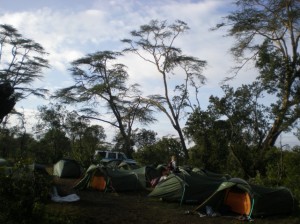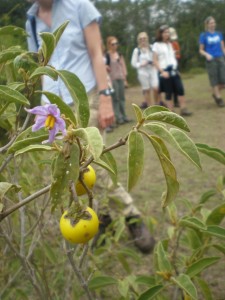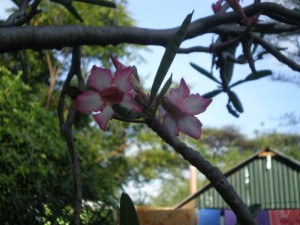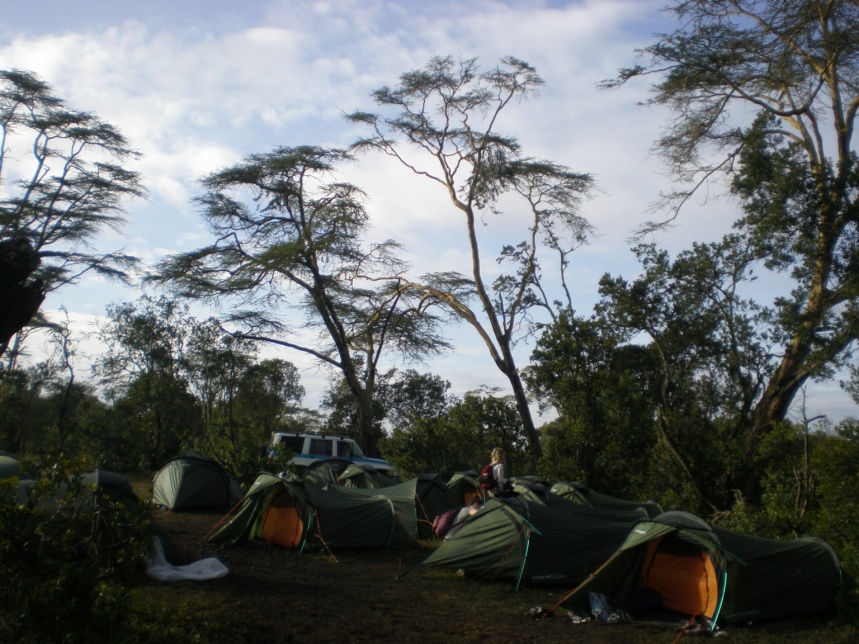
During the first week of November I travelled to Kenya to help out on the Tropical Field Ecology course, run by Ian Donahue in the Zoology Department. Final year students from Zoology, Environmental Sciences, and Plant Sciences attended, and I was the postgraduate representative from the Botany Department. While I should under no circumstances be considered a true Botanist-I study plant-animal interactions, and my botanical skills are mediocre at best- I did my best to learn about the amazing tropical flora of this region. I’m sure others will write about the trip in detail, but I thought I would summarize our experience using the dominant or interesting plants we saw in each place we travelled.
Day 1&2- Arrive in Nairobi: After spending the night in the United Kenya Club, we awoke to a 5 hour drive north to Laikipia County. Along the way the most striking plants were ornamental and known to a number of the students already- for example, colourful Bougainvillea was visible from quite a distance, as were the beautiful flowering Jacaranda trees- neither of course are native to the region.
Day 3-Ol Pejeta Conservancy, Laikipia County: We camped for the next two days in Ol Pejeta, and although we experienced quite a bit of rain, it was one of the most beautiful places I’ve ever seen. The campsite was on the river and surrounded by Acacia xanthophloea, known to the locals as “Yellow fever acacia” for its medicinal properties. It has a yellow-green bark which makes it quite distinctive. On game drives we saw a lot of scrubby shrub species, none in flower. It was difficult to identify many of the species in the conservancy but we were told many of them belong to the genus Euclea. We also got our first glimpse of Solanum incanum but more on that later.

Day 4- Nakuru: Compared to Ol Pejeta the flowering flora here was a breeze to identify! Although a lot of it comprised invasive species, such as Lantana and Datura species, and of course the conspicuous Solanum incanum (also known as Sodom’s Apple). S. incanum gives the management at Nakuru serious trouble, growing uncontrolled in areas that are over grazed or disturbed by humans. In addition to the invasives we saw a lot of Leonotis mollissima and identified a lovely shrub called Tarchonanthus camphorates from its camphor scented leaves.
Day 5-11-Baringo County: And finally, after quite a lot of driving (during which we saw some impressive Euphorbia candelabra specimen), we arrived in Baringo County. Our first day here we went for a hike at Lake Bogoria, and spotted two species of interest. First, the indigenous Adenium obesum, or Desert Rose. Some of the students carried out their mini-project on the nectar secretion and flower visitation of this species, and found nectar volume varies with time of day. Second, we saw Salvadora persica, known as the “toothbrush tree.” Our local guide told us people chew the twigs to promote dental hygiene. Throughout the county, two new species of Acacia were also evident- Acacia tortilis (The Umbrella Thorn, accurately named after its shape) and Acacia mellifera. Women in the area highly value A. mellifera because the honeybees they keep apparently favour it for making particularly sweet honey. And finally, one cannot forget to mention the damaging invasive Prosopis juliflora. Native to Mexico and Central America, it was introduced to try and control soil erosion and now has spread throughout the county. It is difficult to remove as it can regenerate from the roots, and is not particularly useful as fuel, food for livestock or fencing.

This description is simply the most obvious vegetation we saw on the field course. The diversity of flora and fauna was overwhelming and I think the students, demonstrators, and staff alike were impressed and awed by the environments we were fortunate enough to experience. Kenya is truly an amazing place!
Author and Picture Credits;
Erin Jo Tiedeken, tiedekee[at]tcd.ie, @EJTiedeken

